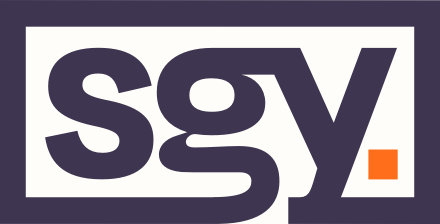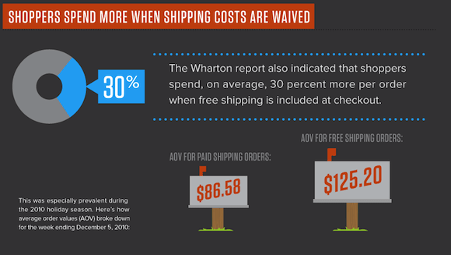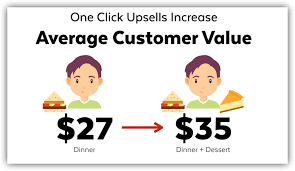eCommerce: Five easy-to-implement essentials to increase your online store’s average order value
In the week starting 6th April, foot traffic in shopping centres plummeted by a huge 93.6%.
As brick and mortar retailers suffer incredible revenue drops as a result of COVID-19, the opposite can be said for their online, eCommerce compatriots – where sales are booming.
The challenge for online retailers, operations and marketing teams is to create an online shopping experience which encourages customers to spend just like they would in store – or if possible, even more.
Increasing the average order value through your online store is one of the fastest ways to grow your brand’s overall monthly revenue.
It’s simple really. If on average, the online store receives 1,000 orders each month, and you manage to increase the average value of an order by just $10 – that equates to a revenue boost of $10,000 each month or $120,000 per year – from the same number of orders, from the same number of customers.
Increasing your AOV (Average Order Value) has 2nd order benefits too, such as allowing you to increase investment into paid advertising channels to acquire new customers. And to do it profitably.
All things remaining equal, a larger AOV is going to increase your ROAS (Return On Ad Spend), making it much easier to obtain more marketing budget when it’s time to report upwards within your organisation.
This article is designed to give practical, actionable advice to quickly increase your eCommerce store’s average order value, with just five simple essentials:
1. Introduce a free-shipping threshold
Introducing a free-shipping threshold is probably the fastest way to boost your average order value. It basically means that when a customer spends above a designated amount, their order qualifies to be shipped to them for free. Hint: everybody loves free shipping.
A report by the Wharton Business School suggests that online shoppers spend, on average, 30% more per order when free shipping is included at checkout.
When introducing a free-shipping threshold, be careful not to add one too-high above your current average order value – this could actually act as a deterrent, having a negative impact on conversion rate and increasing cart abandonment.
Having your free shipping threshold at a sweet spot that feels like a small reach, rather than a big jump is key.
For example, if the average order on your site is $60 – introducing a free shipping threshold at $70 is likely to stimulate more customers to ‘reach’ for that reward.
Both Shopify and WooCommerce have in-built free-shipping threshold mechanisms:
Instructions to set this up on Shopify
Instructions to set this up on WooCommerce
2. Introduce product bundles and multipack savings
Product bundles, and in particular, multipacks (where a discount is offered for two or more of the same item), are a great way to very quickly increase the AOV for eCommerce stores.
Multipacks are particularly potent when deployed with repeat purchase items such as skincare products, health supplements or non-discretionary, necessity purchases like socks or underwear. A customer’s online purchasing habits will show you exactly what products they prefer.
You can use multipack bundles to sound the ‘value-alarm’ in your customers’ minds. For example, if you’re purchasing a 750g salted caramel protein powder for $74.95 and at the checkout you’re offered a second one in a bundle for $53.95, there’s a much higher likelihood you’re going to take both, knowing the first protein is eventually going to run out. This upgrades a $74.95 sale to a $128.90 and is likely to incur no additional shipping costs to fulfil the order.
Bold Bundles is a really easy to use Shopify app that will enable the bundling and multi-pack mechanism to increase your store’s AOV.
3. Introduce one-click-upsell
AKA the eCommerce version of ‘would you like fries with that?’
The one-click-upsell is a simple step to implement which literally, as its name suggests, is an upsell in just one click. Typically added during the checkout phase, one-click-upsells can also be added post purchase, which means the customer does not need to re-enter their billing or shipping details.
How does it work? Simple. Using the Shopify App OneClickUpsell by Zipify, you select a product that relates to, or improves the main purchase, and configure the app so that at the point of purchase the customer is offered the upsell-product.
This app requires no coding or development work!
Let’s look at some real-world examples:
- You’ve just sold a new mattress online for $749 – as the customer is going through the checkout, a one-click-upsell appears offering them two memory foam pillows for the price of one.That $749 cart? Consider it upgraded to $829 in just one-click.
- You’ve just sold an electric toothbrush $59.95 – as the customer is going through the checkout, a one-click-upsell offers them toothpaste, dental floss and mouthwash in a discounted bundle.Seems like a bargain to the customer! But for the eCommerce manager, that’s a $59.95 purchase which just checked-out for $74.95.
4. Express delivery upgrades
This is perhaps the most underestimated and under-utilised eCommerce upsells. However, it’s one of the easiest and fastest to implement.
Simply put, at the shipping stage of the checkout, your store offers the customer an option to upgrade their shipping to express delivery (bonus points if your store calculates when they can expect delivery). eBay does it, Amazon does it, and ASOS does it – they seem to be doing ok!?
Data suggests around 35% of customers will take you up on the express delivery upgrade, and while you may only add $3-5 in profit once you factor-in the added fulfilment costs, extrapolate this across 10,000 orders and then tell us which finance manager is going to turn down $50,000 a year in pure profit, particularly in this climate?
5. Introduce buy now, pay later functionality
The normalisation of buy now, pay later payment options such as AfterPay fundamentally changed eCommerce best practices. AfterPay, the Australian fintech company which launched in 2015 is now the preferred payment option for 1 in 10 online customers and 1 in 4 millennials. The payment gateway is now active on over 30,000 domains across Australia and New Zealand, facilitating $2.2bn in yearly transaction value.
The ability for online consumers to breakdown larger purchases into four, fortnightly instalments has shown to increase average order value by between 15 and 20%.
With AfterPay’s easy to use, plug and play integration, it’s a simple tool eCommerce managers can implement to quickly decrease barriers for larger purchases.



